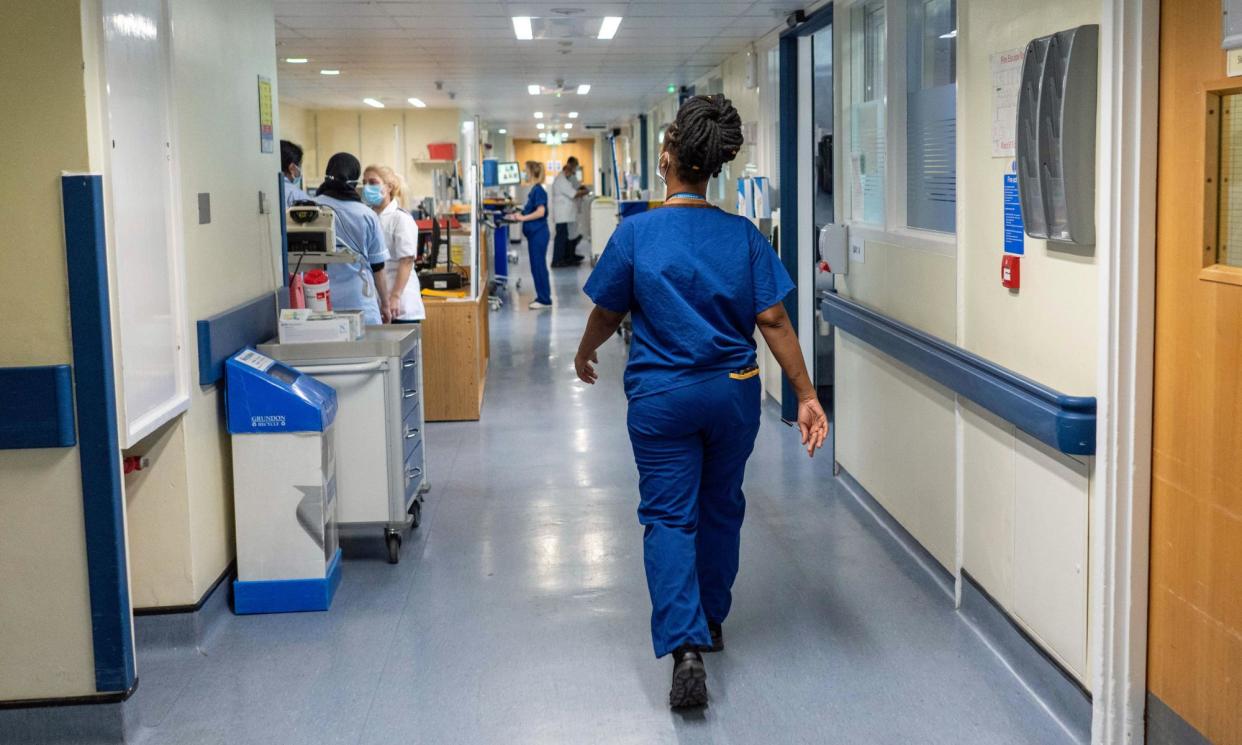NHS across UK spends a ‘staggering’ £10bn on temporary staff

Ministers are facing calls to tackle the NHS’s chronic lack of staff as figures reveal that the bill for hiring temporary frontline workers has soared to more than £10bn a year.
Hospitals and GP surgeries across the UK are paying a record £4.6bn for agency personnel and another £5.8bn for doctors and nurses on staff to do extra “bank” shifts to plug gaps in rotas.
Widespread short staffing has increasingly forced the service in all four home nations to hand colossal sums to employment agencies to hire stand-in workers. In England alone, the bill for agency staff, particularly nurses and GPs, has risen from £3bn to £3.5bn over the past year – a 16% rise.
Wes Streeting, the shadow health secretary, said years of neglect of the growing NHS staffing crisis by Conservative governments had obliged “desperate” hospitals to spend “huge” sums on agency staff, including doctors who can cost more than £5,000 to hire for a single shift.
The Royal College of Nursing said the levels of agency spending were “staggering”. It would be cheaper to employ more nurses as staff instead of having tens of thousands of vacancies, the general secretary Pat Cullen said. The NHS in England currently has 42,306 vacant nursing posts.
The NHS’s outlay on bank staff – who do extra shifts at their own or a nearby hospital to earn extra money – has risen even more sharply than agency spending. In England it has more than trebled from £1.8bn in 2015/16 to £5.8bn in 2022/23, according to a report by the specialist healthcare data analysts LaingBuisson.
Spending on temporary workers overall – agency and bank staff – has “skyrocketed” in recent years because Covid has led to an already understaffed NHS coming under greater strain amid the increased demand for care and political pressure to cut the backlog, LaingBuisson found.
Many parts of the health service – including A&Es, maternity services, GP practices and intensive care units – are struggling to overcome severe and longstanding staff shortages. Lack of personnel is forcing hospitals to cancel operations, delay treatment and even induced births of babies.
“The sums of money that the NHS is spending on temporary staff have exploded in recent years,” Tim Read, LaingBuisson’s director of research and content, said.
A clampdown by the NHS in England in 2015/16 on the use of agency staff led to health service trusts reducing the amount they spent on them from £3.63bn that year to £2.38bn in 2019/20. But it has crept back up since then and hit £3.46bn in 2022/23, the firm found.
“Our analysis suggests that spending on temporary agency staff is skyrocketing. The amount of money spent on agency staff through recruitment agencies has grown massively in the last two years,” Read said.
“When you take into account the amount of money that is also spent on bank staff, this takes NHS spending on non-permanent staff to more than £10bn in 2022/23.”
Trusts in England are paying up to £5,234 to hire an agency doctor and up to £2,140 for an agency midwife to undertake a single shift, Labour research has found. The Northern Care Alliance trust in Greater Manchester spent £21m in 2021/22 on agency doctors and £16.7m in 2022/23 on midwives it sourced through agencies.
“These sums going on agency staff are genuinely staggering when there are tens of thousands of vacant posts. It just does not add up,” said Cullen. It would be more cost-effective to raise the NHS’s recruitment and retention of nurses by paying them better, she added.
Employment agencies such as Acacium Group and Medacs Healthcare have seen their income rise sharply in recent years as a direct result of the NHS’s growing reliance on healthcare personnel they supply, the Health Service Journal reported in October 2022.
NHS England said health trusts were now spending less on agency staff than before and also less as a proportion of the service’s overall spending this year. But it did not provide figures to substantiate either claim.
However, LaingBuisson’s figures show that the NHS in England spent £3.46bn on agency workers in 2022/23 – £471m more than the £2.99bn the year before. The percentage of the overall £9.3bn annual outlay on temporary staff that was used to hire agency personnel rose slightly over that time.
An NHS England spokesperson said: “Despite record pressure and unprecedented periods of industrial action, the NHS has decreased the amount of money spent on agency staff both in absolute terms and as a proportion of spending this financial year.
“The NHS will continue to reduce reliance on agencies in the coming years by training more NHS staff domestically and retaining more existing staff, as part of the NHS Long Term Workforce Plan.”
But Read said the NHS could not take it for granted that the plan would deliver the huge increases in homegrown staff by 2038 that it envisages. Politicians will need to invest large sums and show “commitment across several election cycles” for that to happen, he said.
NHS bosses blamed the huge bill for temporary personnel partly on industrial action by NHS staff.
“High demand on services, overstretched budgets and staff shortages mean too often the NHS has to rely on agency and bank staff to plug workforce gaps,” said Saffron Cordery, the deputy chief executive of NHS Providers, which represents health service trusts in England.
“Trusts are doing all they can get to get a grip on agency spend and expensive overtime payments, but on top of existing challenges, wave after wave of industrial action is making it harder to ensure staff pay costs don’t rise significantly,” she said.
In addition, trusts’ efforts to deliver Rishi Sunak’s promise to bring down NHS waiting lists means they work “flat out” and this “can involve creating additional shifts that need to be staffed”, she added.

 Yahoo News
Yahoo News 
